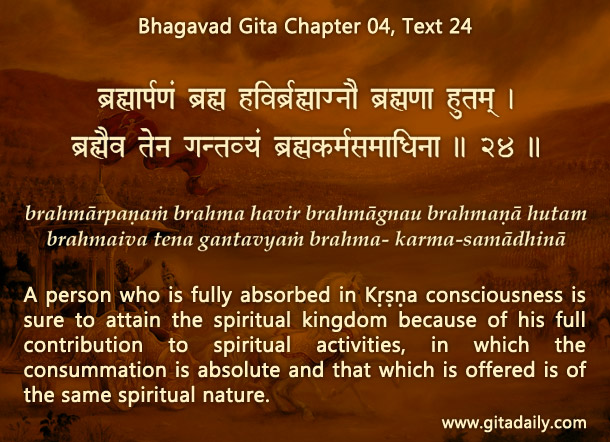The multiple senses of the word ‘spiritual’ can be confusing. For example, the material body is said to be radically different from the spiritual soul, and yet advanced spiritualists are said to see everything as spiritual.
The Bhagavad-gita in its second chapter differentiates between the body and the soul or more generically between matter and spirit. And yet the same Gita later (04.24) states that in the process of yajna, everything can be envisioned as spiritual (brahma). Is this a naïve imagining that everything is spiritual? No, as is evident from the verse’s concluding assertion that such seers will attain the spiritual destination. This assertion implies that though everything is spiritual, still there exists a distinctive spiritual destination to be attained.
To make sense of this, we need to first go back to the constitutional or compositional difference between spirit and matter. Spirit has the features of eternity, consciousness and bliss (sat-cit-anand) – features that are conspicuously absent in matter. Indeed, matter exhibits the utterly opposite characteristics: it is temporary, insentient and misery-inducing.
And yet despite such compositional difference, matter and spirit share a fundamental feature: they come from the same source, God. Both are Krishna’s energies. And they are both meant to be connected with their source. Of course, matter being unconscious can’t connect itself. But we conscious beings can connect ourselves by learning to love Krishna and we can connect matter with him by learning to lovingly use material things in his service. Spiritual savants see in matter its spiritual potential, its potential to be used in Krishna’s service. In this sense, they see everything as spiritual.
When we consciously and conscientiously use the material in the service of Krishna, we become increasingly conscious of him and thus realize our spiritual constitution as his eternal enlightened ecstatic parts.

Explanation of article:

Wow! Such a wonderful explanation. Thank you.